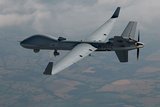Penguin B UAV completes 54.5 hours nonstop flight
UAV Factory has announced that its Penguin B UAV has completed a non-stop 54 hour and 27 minute flight, achieving the longest recorded flight ever for a mini-class unmanned aircraft. The company made the announcement 7 July 2012.
The flight has knocked AAI’s Aerosonde previous record of a 38 hour endurance flight off the top spot, as well as Insitu’s Scaneagle, which has a 28 hour endurance capability.
The company said that the Penguin B for the endurance record was a testbed for UAV Factory’s latest developments, and that some of these technologies will now be directly transferred to commercially available Penguin B aircraft and available as a retrofit for existing Penguin B UAVs.
The fully loaded Penguin B took off from a car launcher on 5 July 2012 and belly landed more than two days later on 7 July 2012. The Penguin carried nearly 13 kg (28.7 lbs.) of regular gas and oil premix. Fuel was stored in fuselage tanks as well in integral wing fuel tank. The total takeoff weight of the aircraft was 22.3 kg or 49.2 pounds. The air temperatures exceeded 30 °C and the wind gusts were reaching up to 20 m/s. At the end of the flight, Penguin B performed belly landing.
During flight the aircraft was controlled by a Piccolo flight control system, manufactured by Cloud Cap Technology of Hood River, US. The flight also summarized the flight testing of the EFI system, manufactured by Currawong Engineering of Kingston, Australia.
The company commented on the flight, saying, ‘The 54.5 hour endurance demonstration opens new possibilities for utilising the small unmanned aircraft. With such endurance capabilities, aircraft is able to stay on station for several days at a time without landing - using the most advanced mini UAVs available today, the same mission would require around 3-5 takeoffs and landings. Since over the half of the unmanned aircraft accidents occur during the takeoff and landing flight phases, the increased endurance considerably improves the system reliability.’
More from Uncrewed Vehicles
-
![What's next for the Pentagon after the Replicator programme?]()
What's next for the Pentagon after the Replicator programme?
Although the Replicator initiative has made several accomplishments, there are still multiple gaps to plug across the US Department of Defense (DoD) and its services.
-
![Cummings Aerospace showcases Hellhound loitering munition designed for US Army’s LASSO programme (video)]()
Cummings Aerospace showcases Hellhound loitering munition designed for US Army’s LASSO programme (video)
Cummings Aerospace presented its turbojet-powered Hellhound loitering munition at SOF Week 2025, offering a man-portable solution aligned with the US Army’s LASSO requirements.
-
![SOF Week 2025: PDW unveils attritable FPV drone for SOF operations at scale]()
SOF Week 2025: PDW unveils attritable FPV drone for SOF operations at scale
PDW has revealed its Attritable Multirotor First Person View drone at SOF Week 2025, offering special operations forces a low-cost, rapidly deployable platform for strike and ISR missions, inspired by battlefield lessons from Ukraine.
-
![SOF Week 2025: Teledyne FLIR white paper provides guidance on reusable loitering munitions]()
SOF Week 2025: Teledyne FLIR white paper provides guidance on reusable loitering munitions
Teledyne FLIR is highlighting the emerging requirements for 'recoverable and re-usable' loitering munitions across the contemporary operating environment during this week’s SOF Week conference in Tampa, Florida.
-
![SOF Week 2025: Kraken Technology group debuts K3 Scout USV in North America]()
SOF Week 2025: Kraken Technology group debuts K3 Scout USV in North America
High-performance maritime industry player Kraken Technology Group, based in the UK, has used the SOF Week conference in Tampa, Florida this week to debut its K3 Scout uncrewed surface vessel (USV) to the North American market.
-
![Palladyne AI and Red Cat to demonstrate capabilities for autonomous drone swarms to the US military]()
Palladyne AI and Red Cat to demonstrate capabilities for autonomous drone swarms to the US military
Red Cat and Palladyne AI recently conducted a cross-platform collaborative flight involving three diverse heterogeneous drones.

























